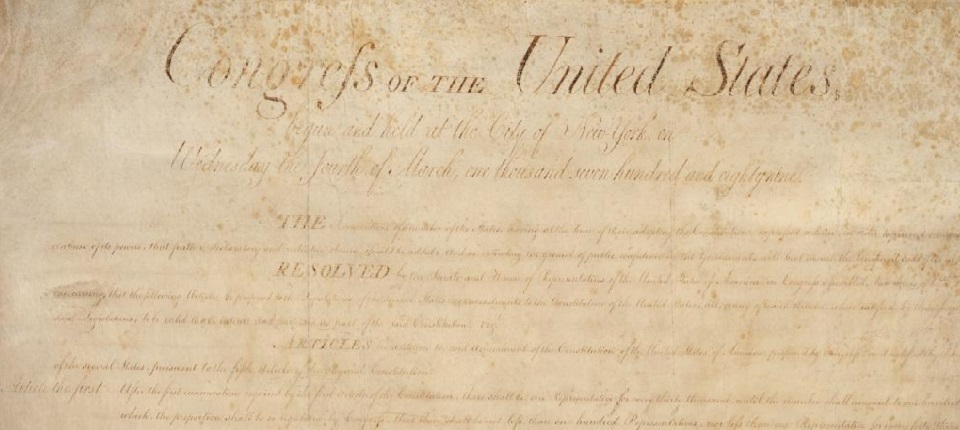Bill of Rights Resources

What Is the Bill of Rights?
Shortly after the ratification of the U.S. Constitution, the Founding generation added the Bill of Rights—the Constitution’s first 10 amendments. These amendments guarantee many of our most cherished liberties, including the freedom of religion, the freedom of speech, the right to keep and bear arms, and the right to a jury trial.
Read NowHow Was the Bill of Rights Ratified?
On September 25, 1789, the First Congress of the United States proposed 12 amendments to the Constitution in a Joint Resolution of Congress. Ten of the proposed 12 amendments were ratified by three-fourths of the state legislatures on December 15, 1791.
Fifth Amendment: Grand Jury, Double Jeopardy, Self Incrimination, Due Process, Takings
Criminal Procedure Clauses
Due Process Clause
Takings Clause
Sixth Amendment: Right To Speedy Trial By Jury, Witnesses, Counsel
Seventh Amendment: Jury Trial In Civil Lawsuits
Eighth Amendment: Excessive Fines, Cruel And Unusual Punishment
Discover How It Was Written
Our interactive shows the drafting process that led to the Bill of Rights
Founders' Library
The National Constitution Center’s Founders’ Library includes primary texts that span American constitutional history, including that have shaped the American constitutional tradition.
Virginia House of Delegates, The Virginia Declaration of Rights (1776)
Pennsylvania Convention, Pennsylvania Constitution (1776)
James Wilson, Speech at a Public Meeting in Philadelphia (1787)
Thomas Jefferson and James Madison, Correspondence on a Bill of Rights (1787-1789)
James Madison, Speech in Support of Amendments (1789)
George Mason, Objections to the Constitution of Government formed by the Convention (1787)
Read More DocumentsFeatured Video
Constitution 101: Bill of Rights
Unadopted Bill of Rights Amendments
Related Content
Supreme Court Cases
The National Constitution Center’s Supreme Court Cases Library includes materials on the most influential Supreme Court cases in American history.
Read MoreAmerica's Town Hall Video
Watch video conversations and discussions featuring leading scholars on topics including the Bill of Rights.
Read MoreConstitution Daily Blog
The Constitution Daily blog features stories on the origins of the Bill of Rights and related topics.
Read More
Bill of Rights Trivia Night
Saturday, December 27 | 4:15 p.m.-6:30 p.m.
Celebrate the season and the Bill of Rights at the National Constitution Center on Saturday, December 27, with free admission and free food from 4:15–6:30 p.m. Join us for an evening of historically-themed Quizzo, with prizes for the top three teams. Entry to the trivia contest is free and open to all ages. You can also enjoy the museum's galleries, including Signers’ Hall, The 19th Amendment, and Civil War and Reconstruction. Beginning at 5 p.m., a cash bar will be available for guests over 21.








